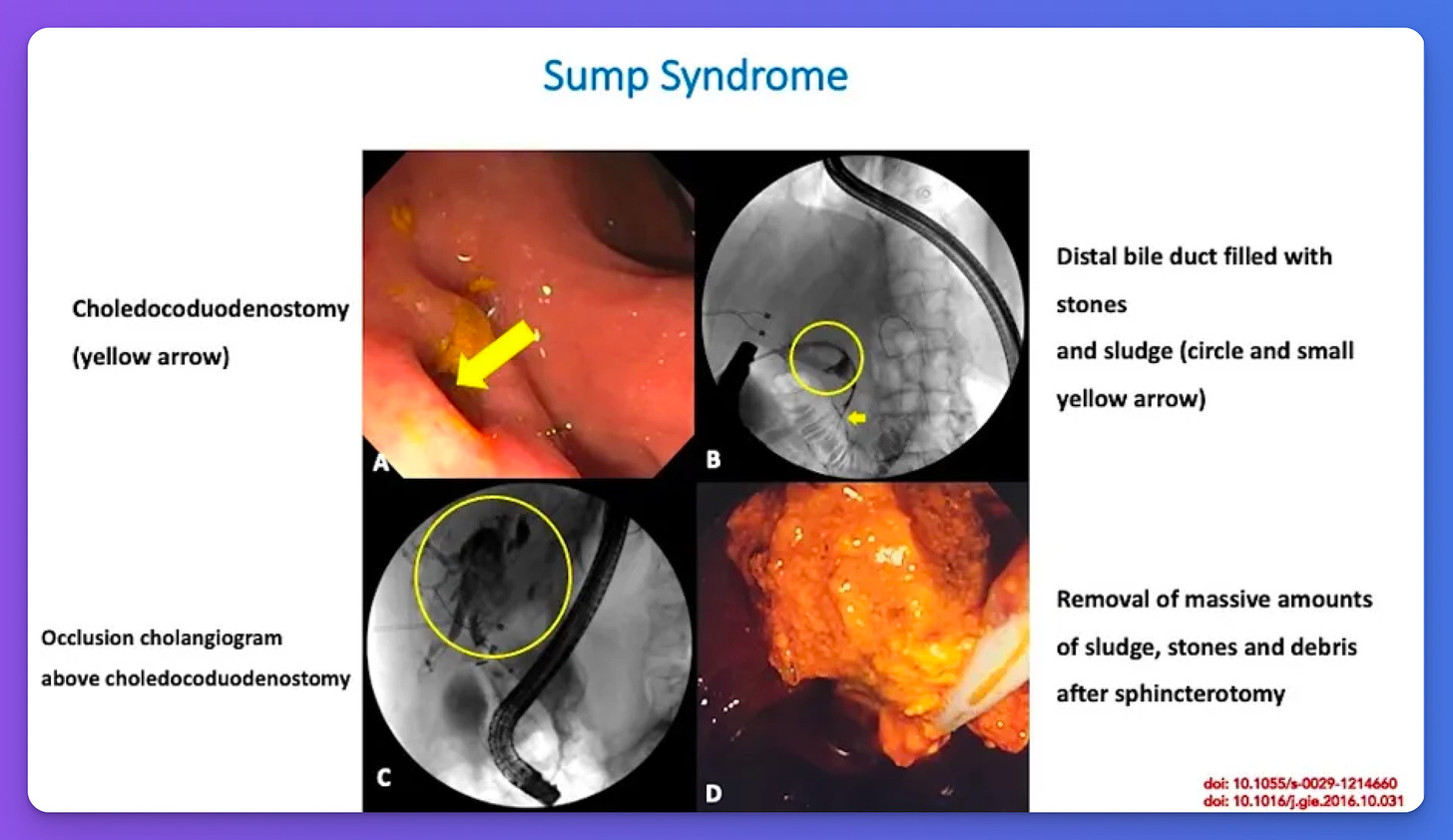Welcome to 6,136 motivated endoscopists!
A big thank you to this week's sponsors who help keep this newsletter free for the reader:
EndoCollab. EndoCollab is an online community for GI endoscopists. With 750+ members, endoscopists discuss interesting cases, view on-demand video courses, and get new endoscopy tips every day. Join EndoCollab.
The Sump Syndrome
In the past, performing a side-to-side anastomosis of the bile duct to the duodenum (choledocoduodenostomy) was a quite common operation. This operation is now seldomly performed, but we still patients who underwent it.
The “Sump syndrome” is a rare complication of a side-to-side choledochoduodenostomy that usually presents with obstructive jaundice or ascending cholangitis.
Sump syndrome develops due to the accumulation of food and debris entering through the choledocoduodenostomy and being collected inside of the distal bile duct.
The debris cannot be excreted through the papilla due to malfunction of the sphincter of Oddi, as the main orifice of bile excretion into the duodenum is the choledocoduodenostomy, which is the path of least resistance.
At one point there is so much “dirt” inside the bile duct that obstruction and infection (cholangitis) ensue.
Treatment is easy: biliary sphincterotomy with cleansing of the bile ducts.
However, knowledge of this condition is essential for proper recognition and treatment. Lack of knowledge of the sump syndrome condition may lead to incomplete or failed ERCP and persistent cholangitis or choledocolithiasis.




